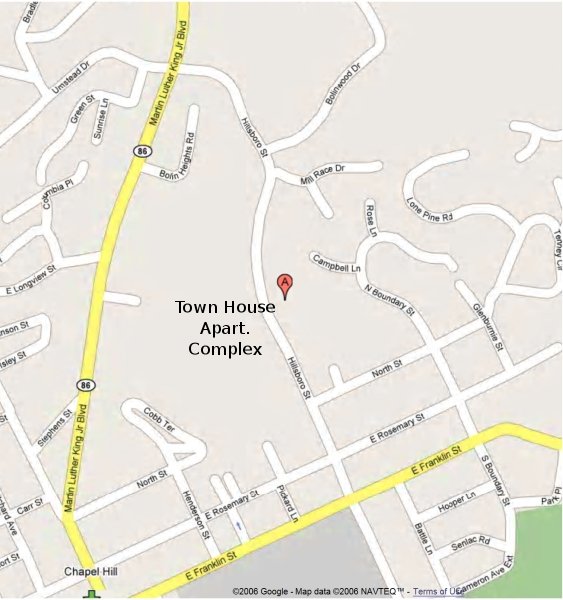Robin Cutson, a fellow 2005 candidate for Chapel Hill Town Council and, more recently, a candidate for Orange County Board of Commissioners, has decided to spur local change outside of the “established system”.
She say’s she’s frustrated with the inability of our local elected folk to solve problems in a common sensical fashion:
…it appears that citizens are being asked to provide services and functions that once were provided by local governments—in essence, citizens are acting as their own ad hoc unfunded local government—-while at the same time existing local governments are expanding and becoming bloated bureaucracies—adding more government positions and seemingly semi-permanent consultants.
SqueezeThePulp, Aug. 7th, 2006
She doesn’t think the current political process is too effective:
Is there anything that can be done? Well we could vote in responsible elected officials. . .but from the consistently low voter turnout and the continual re-election of incumbents it appears that the majority of people either don’t care, or that the majority of people like the way things are going—or that the majority have simply given up. Or maybe people are too busy trying to lead their private lives and fulfill their duties as an ad hoc citizen government to get organized and effect change.
and has suggested a “fun” alternative:
So maybe its time for a new approach. Not just more guest columns and letters and blogging trying to push change or the election of a common sense political candidate—this obviously didn’t help in the last election cycle. And not just another citizen group or task force—there are so many of these now that no one pays attention anymore.
Maybe it’s time for something more fun. . .something designed to get the notice of busy average citizens who are disenfranchised and disillusioned with politics as usual. Maybe we should start a media campaign to elect a Mayor and council for an ad hoc unofficial citizen government and let them represent our interests and needs to the dysfunctional existing government bodies. It could be fun. . .
Robin and I share some common concerns; preserving our local environment, shepherding local resources wisely, the troubling direction UNC’s Carolina North development is taking, the course our stormwater management utility is charting, the lack of progress in forging ahead on real budget reforms.
We also disagree on causitive factors and suggested solutions.
And that’s OK.
For me, running for Council was an enjoyable and exhilarating experience. I delighted in every opportunity I had to meet with citizens and discuss my vision of Chapel Hill’s future.
Robin, your style of running, of getting your message out, was distinctive – fairly full on – and, I’m guessing, a bit rocky at times. I believe I understand why you “only half” jest in suggesting an ersatz governmental body to “sensibly” rule the local roost.
But you have folks that share your point of view. You have been a strong advocate on their behalf.
Why disengage from the current political process?
…I have personally sworn off ever running again for any office real or imagined and feel my casting a vote in existing local elections and hoping for change is like dropping a feather down the Grand Canyon and waiting for an echo…
Engagement, Robin.
Hands-on engagement. Discovering, discussing, debating the issues – fighting for Chapel Hill’s better future.
Isn’t that why we ran?
